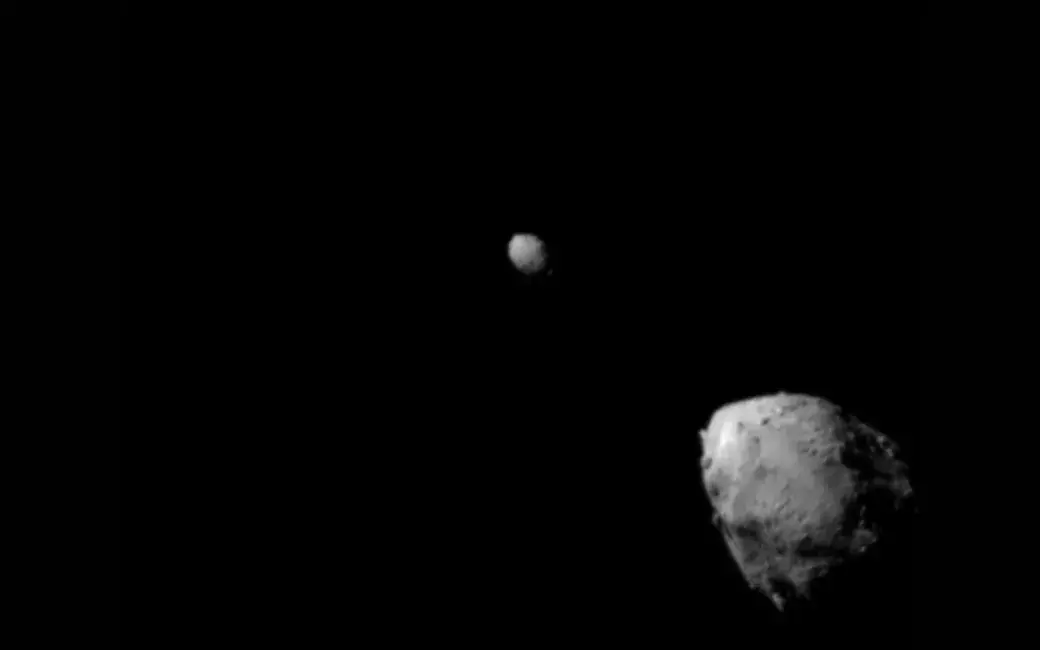Today (September 27, 2022) at 2:14 AM EEST NASA's Double Asteroid Redirection Test (DART) spacecraft successfully conducted the world's first full-scale planetary defense test.

DART spacecraft successfully conducted the world's first full-scale planetary defense test by impacting asteroid moonlet Dimorphos (Greek for "two forms"), which orbits a larger asteroid named Didymos (Greek for "twin"). The kinetic impact demonstrated one possible method of asteroid deflection technology. As part of an international planetary defense strategy, the DART mission proved that a spacecraft can autonomously navigate to a target asteroid and intentionally collide with it to alter its orbit. DART is accompanied by a small Italian sub-spacecraft called LICIACube, which observed the impact from a distance.
The target of the mission is a binary asteroid system, which consists of a larger asteroid named Didymos (780 meters in diameter) and a smaller, orbiting asteroid moonlet named Dimorphos (160 meters). The asteroid system currently poses no threat to Earth but is an ideal natural laboratory to safely test an asteroid deflection method known as kinetic impact.
As DART impacted the Dimorphos moonlet with a velocity of 6.15 kilometers per second, the kinetic energy delivered by the spacecraft altered its orbit around the larger Didymos. The orbit of the entire system around the Sun remained unchanged and the system thus continue to pose no threat to the Earth. The DART collision is expected to shorten Dimorphos' orbital period by several minutes. Telescopic observations performed in the following weeks will precisely measure the orbital period change and determine how efficient the DART impact was. Scientists from the University of Helsinki take part in this observation campaign using the Nordic Optical Telescope on La Palma, Spain.
The European Space Agency is preparing a complementary mission named Hera, which will arrive to the Didymos system in 2027. Instead of impacting the asteroids it will rendezvous and conduct detailed scientific characterization of the asteroid pair and precisely measure their mass, size, composition, and internal structure. Hera will also document in detail any traces left by the DART collision with Dimorphos. The Hera spacecraft will carry a small sub-spacecraft named Milani, equipped with a miniaturized hyperspectral imager called ASPECT developed by VTT Technical Research Centre of Finland. ASPECT will provide crucial data about the mineral composition of both asteroids.
Finnish researchers at the University of Helsinki, VTT, University of Jyväskylä, and Jamk University of Applied Sciences actively participate in the scientific planning and the data analysis of both DART and Hera missions.
DART is a NASA mission managed by Johns Hopkins Applied Physics Laboratory. Both DART and Hera are testing new technologies and provide important data to enhance our modeling and predictive capabilities, and help us better prepare for an asteroid that might pose a threat to Earth, should one be discovered.






